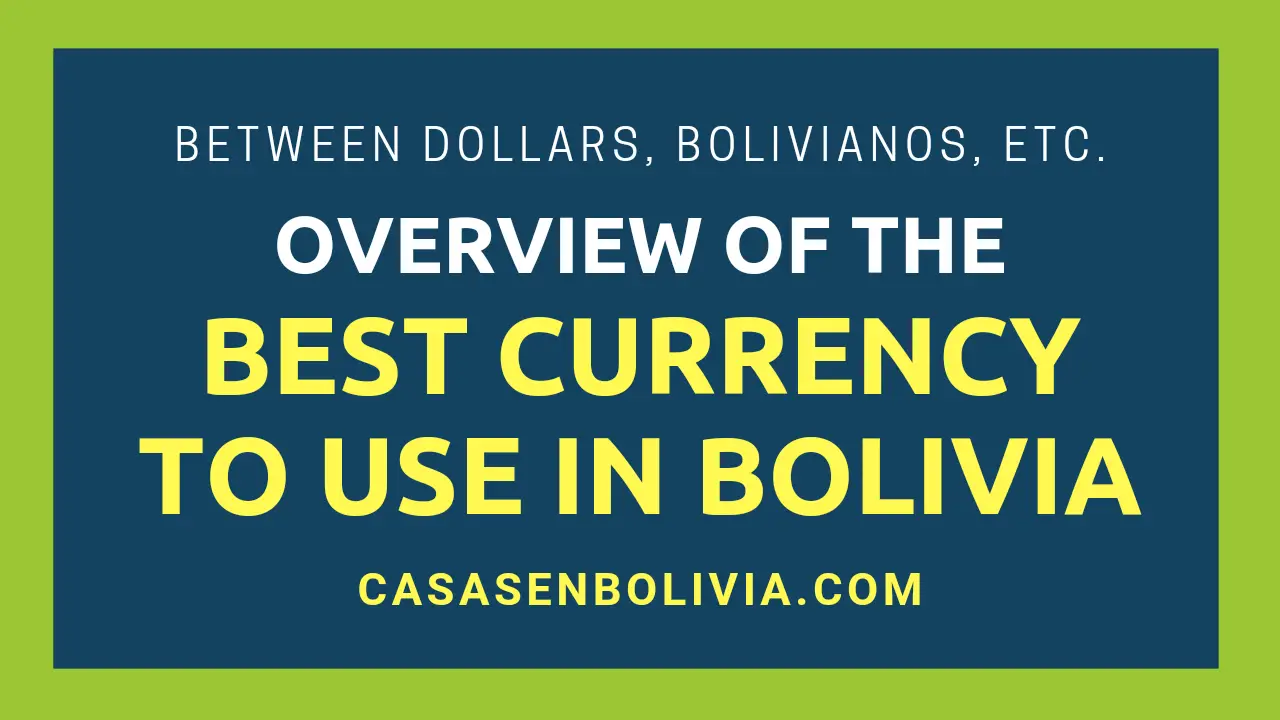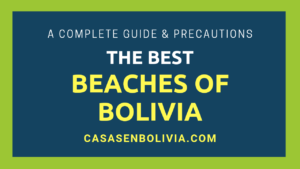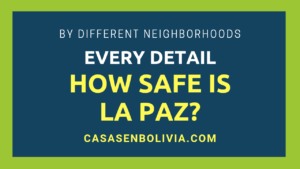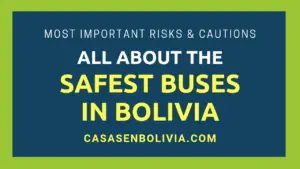Last Updated on February 15, 2025
In Bolivia, the local currency, the Boliviano, is by far the most commonly used for almost all everyday transactions. However, this doesn’t mean the US Dollar isn’t used at all. In fact, it’s preferred for significant transactions involving large sums of money and is also widely accepted in tourist areas.
The best currency to use in Bolivia generally depends on the situation. The Boliviano (Bs) in cash is preferred for small, everyday transactions. For larger, more critical transactions exceeding $1,000, the US Dollar is preferred. Euros and other currencies are rarely used.
Here, we’ll discuss the best currency to use in Bolivia for different situations and various types of individuals, such as tourists or ordinary Bolivians. You’ll also learn how much of each currency you’ll typically need daily while staying or visiting our country. We are Bolivian real estate experts (you can visit our Bolivian real estate website), and we’ve lived in Bolivia our entire lives.
The Best Currency for Bolivia
The best currency for use in Bolivia *depends on the type of transaction* you’re making and your role (e.g., tourist, resident):
- For the average tourist: Bs300 per day in cash, along with $200 in cash as a backup, and a few hundred dollars on a credit or debit card, will be the optimal combination.
- If you want to live like an ordinary Bolivian (be aware that this requires local knowledge and adaptation): Bs70 to Bs150 per day, and potentially a debit card with some Bolivianos, will be your best mix.
- If you want to purchase significant or expensive goods and services, such as through Airbnb, multi-star hotels, airline tickets, tour packages, expensive electronics, car rentals or purchases, or real estate in Bolivia, then the US Dollar ($) is the preferred currency (though not in large cash amounts, due to safety concerns).
- If you want to buy everyday items like food, groceries, clothing, souvenirs, books, or pay for cinema tickets, parks, or ground transportation, the Boliviano (Bs) is the best currency in this case.
| Common Tourist | Common Bolivian | To Buy Everyday Items (<$1,000) | To Buy Significant Items (>$1,000) | |
| Best Currency | Bolivianos | Bolivianos | Bolivianos | US Dollars |
| How Much? | ||||
| Bolivianos (cash) | Bs300 | Bs70-Bs150 | Necessary | Accepted |
| US Dollars (cash) | $200 (for contingencies) | $0 | Not necessary | Best accepted (*not cash! It’s risky*) |
| Credit Card | $500-$1,000 | $100-$200 | Sometimes accepted | Sometimes accepted |
| Euros | Almost useless | Almost useless | Almost useless | Almost useless |
| Other Currencies | Useless | Useless | Useless | Useless |
Now, let’s examine why these figures and guidelines make sense when you’re staying or visiting our country.
Two Currencies Are Widely Used in Bolivia
1) The Local Currency: Boliviano (Bs, BOB)
The local currency, the Boliviano, is by far the most widely used *for almost all minor transactions* in Bolivia. This currency is used when people pay for small goods and services, as well as for ground transportation, food, clothing, and similar everyday items.
However, for more significant or larger transactions (generally those exceeding $1,000), *people prefer to use US Dollars*. For instance, if you’re purchasing a computer in Bolivia, many sellers will readily accept dollars as payment.
Avoid using cash for transactions exceeding $1,000. It’s safer to use a bank account or a credit/debit card.
Regarding tourist services and items, most tourist agencies will readily accept *both Bolivianos and US Dollars* without any issues.
2) The US Dollar ($, USD)
As mentioned, US Dollars are widely accepted in Bolivia *for larger or more important transactions*, such as paying for airline tickets, premium hotels, and many tour packages, or when purchasing electronics, cars, houses, etc.
However, for minor transactions, such as buying groceries in open-air markets or paying for a taxi, using US dollars in cash might be problematic, and many vendors may not accept this currency.
The Euro is Rarely Used in Bolivia
Euros are seldom used in Bolivia, neither for everyday small transactions nor for larger, more significant ones. Even at ATMs, this currency is largely absent; perhaps only 1 or 2 out of every 100 ATMs will offer the option to deposit or withdraw in Euros.
Banks are also hesitant to handle Euros and prefer US Dollars as the primary foreign currency for nearly all banking operations, alongside the Boliviano.
Therefore, if you attempt to purchase something with Euros in Bolivia, you’ll likely have difficulty finding someone who will accept them. Of course, you can always visit a bank or currency exchange house to exchange your Euros for Bolivianos or US Dollars.
Other Currencies Are Non-Existent in the Country
Any other currency you might consider, such as Pesos, Yen, Rupees, etc., is simply never used in Bolivia. Even banks and currency exchange houses will likely have difficulty exchanging them.
Therefore, if you attempt to use currencies other than Bolivianos, US Dollars, or Euros in Bolivia, you won’t be able to do so. Even with banks, these currencies will be virtually useless.
How Much Cash of Each Currency Should You Have Per Day?
For an ordinary Bolivian from the lower-middle or middle class, having between Bs70 and Bs150 ($10 to $21) will generally cover all their routine daily expenses.
Considering that goods and services are relatively inexpensive compared to other countries, a typical Bolivian will have almost no difficulty managing with around $15 in their pocket for a given day.
However, for tourists and foreigners, the situation is different. Generally, tourists in Bolivia tend to spend considerably more, either because they purchase more services in the travel and tourism sectors or because Bolivian vendors charge them significantly higher prices for the same services compared to local residents.
Therefore, if you’re an average tourist from a developed country visiting Bolivia and plan to spend on tourist locations, tour packages, premium restaurants, hotels, souvenirs, and similar items, we recommend the following:
- Have around Bs300/day ($43) in cash per person to purchase common goods and services and for day-to-day transactions.
- Also, have around $200 in cash per person for unforeseen transactions and contingencies that might arise (this money is not intended to be spent every day and *serves solely as a precaution and backup* that may or may not be used).
- Additionally, have a credit or debit card with $500 to $1,000 per person, as many merchants in Bolivia accept credit and debit cards, particularly in tourist areas. Remember to *properly secure your card* in case of theft and avoid carrying excessive amounts of money on it.
Therefore, for a given day in Bolivia, you should have Bs300 in cash (for common daily transactions), $200 in cash (for potential contingencies), and $500-$1,000 on a credit or debit card (for payments where they are accepted) per person, and you shouldn’t encounter any significant difficulties within the country.
Are Credit and Debit Cards Preferred Over Cash in Bolivia?
Not really. Most retail establishments and vendors *outside tourist areas prefer cash over credit and debit cards* in Bolivia.
However, within and near tourist areas, as well as in all residential, premium, and expensive neighborhoods throughout the country, credit and debit cards are widely accepted, supported, and welcomed in most commercial areas, retail spaces, and by most vendors.
As you can see, *credit and debit cards are still not universally used* for paying for goods and services in Bolivia. Nevertheless, you have several payment options available in the country, as we detail in another article: The best payment methods in Bolivia: A complete guide.
Conclusions:
In this guide on the best currency to use and carry in Bolivia, you’ve seen that it actually depends on the type of transaction you’re going to make, whether it’s a routine or significant purchase, small or large. The optimal currency also depends on your intended lifestyle, whether you plan to live like a tourist or a Bolivian citizen.
You’ve learned that for normal, small, or everyday transactions, the Boliviano is by far the most accepted and, therefore, the best currency, for both convenience and safety reasons. However, when making a purchase exceeding $1,000, the US Dollar is the preferred currency (though not in large cash amounts). You’ve also realized that the US Dollar is more widely accepted in tourist areas for common or small expenses.
You’ve also seen that, as a tourist in Bolivia, you’ll need around Bs300 (Bolivianos, equivalent to $43) in cash per day to cover all your typical daily expenses. Additionally, you should have around $200 in cash as a backup for potential contingencies. Finally, you should also have a credit or debit card with $500 to $1,000, and use it where it’s accepted.
We hope this information has been helpful. If you’d like to know what Bolivian currency looks like, along with all its details and how to differentiate between legitimate and counterfeit Bolivian cash, among other aspects, please visit our dedicated guide here: What does Bolivian money look like? A full overview.
CasasenBolivia.com, information on living, working, investing, and traveling in Bolivia.








